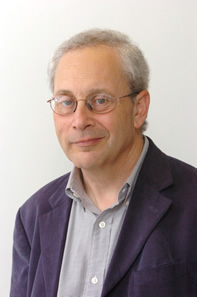http://www.matthewengel.co.uk/lectures/oxford/introduction.html
To his great surprise, Matthew Engel was invited to become the News International Visiting Professor of Media at Oxford University, in which capacity he delivered a series of lectures entitled Please, mister, can we have our ball back? Sport, the media, and the people earlier this year. The link leads to the text of the lectures.
I have made plain in other posts my admiration for Engel's writing. He became the cricket correspondent of The Guardian in 1982, after impressing on the county circuit (The Times for Gibson or The Guardian for Engel was a taxing choice for a young student in the early eighties).
From 1987 he divided his time between sport and the rest of the world, including a spell on The Guardian's Washington desk. He follows in the tradition of Cardus, Arlott and Alan Ross in being better known to some readers for his writing on other subjects, though he found time to drag the Wisden Almanack into the modern era. He edited 12 editions in two spells, and improved the quality of the writing in the good book considerably. Nowadays, his journalism is found in the Financial Times, which has a pay fence with lots of holes in it rather than a paywall, so it is easy enough to keep up with him.
So Engel is a splendid choice for an Oxford Chair, if unlikely one for a Murdoch-funded office. When I attended a sportswriting workshop Engel ran at the Cheltenham Literary Festival in 1995 he was very much of the he-is-the-devil's-spawn school of thought on Murdoch and his influence on the British media. His view has mellowed into ambivalence: he is for paywalls and admires the success of the British version of Sky TV, while regretting the extent to which some sports administrators are in thrall to it.
Engel identifies other reasons for his being an appropriate choice for an Oxford professorship:
My hair is often rumpled, my clothes a bit askew, my jacket a bit shabby. I have a taste for obscure lines of enquiry. I am hopelessly absent-minded. I am secretly addicted to pointless political intrigues, which I’m told would make me feel at home in any senior common room in Oxford. And most of the time, nobody knows what on earth I’m talking about.In the lectures he traces the relationship between sport and the media from cave paintings onwards, outing Homer as a bad sports reporter along the way. He shows how mutually beneficial this relationship has been:
Cricket in particular was a media creation: newspapers, not the MCC, created the concepts of the County Championship, Test matches and the Ashes.He reminds us how important the game was to the Murdoch when it appeared that Sky TV could bring News International crashing down in the early 90s. The first big spike in the sale of dishes preceded the beginning of football's Premier League by six months: it was the 1992 cricket World Cup. Engel quotes David Elstein, an early Sky head of programmes, as saying “that’s when Surrey discovered Sky”. Before then, a dish was not something that a respectable home would have attached to it.
Engel makes the point that cricket is ideally suited to pay TV, which has hours to fill, and less so to the constricted free-to-air schedules, which have so many demands upon them. Even so, he regrets that cricket, alone of significant British sports, has removed itself entirely from live free-to-air coverage. Evidence that he is right to worry about the consequences of this is already apparent. There was nothing like the public interest in the 2009 Ashes series that there had been in 2005, when key passages of play enthralled the country.
I suggest a solution that I have not seen proposed anywhere else: that play after lunch on the Saturday or Sunday of every Test should be shown on a free-to-air channel (probably the one showing highlights), along with a couple of ODIs every summer. That would allow the general public to recognise the players at least, but would not be enough to dissuade viewers from subscribing to Sky, so would not significantly reduce the amount on the Murdoch cheque.
Engel suggests that TV is responsible for sport being got out of proportion these days. He contrasts the response to the England football team's victory in the 1966 World Cup – which the country's biggest-selling newspaper the Daily Mirror did not feature on the front or back page on the following Monday – with the hysterical, see-pages-1-to-26 reaction to success or failure that is routine these days (he cites Paul Collingwood's MBE for 17 runs at the Oval in 2005 in support: case closed). He says that the recent experience of war 45 years ago meant that people had a sense of perspective and knew how unimportant sport actually was.
Use the link to enjoy the lectures.
There's another Matthew Engel piece that is required reading (but it comes with a resilience-required warning):
http://www.guardian.co.uk/lifeandstyle/2005/dec/03/familyandrelationships.health
It is an account of the terminal illness and death of his 13-year-old son Laurie in 2005. Of course, a writer of moderate talent could produce a tearjerker from such subject matter; but only a great journalist could write a piece of such honesty, wit and humanity.


